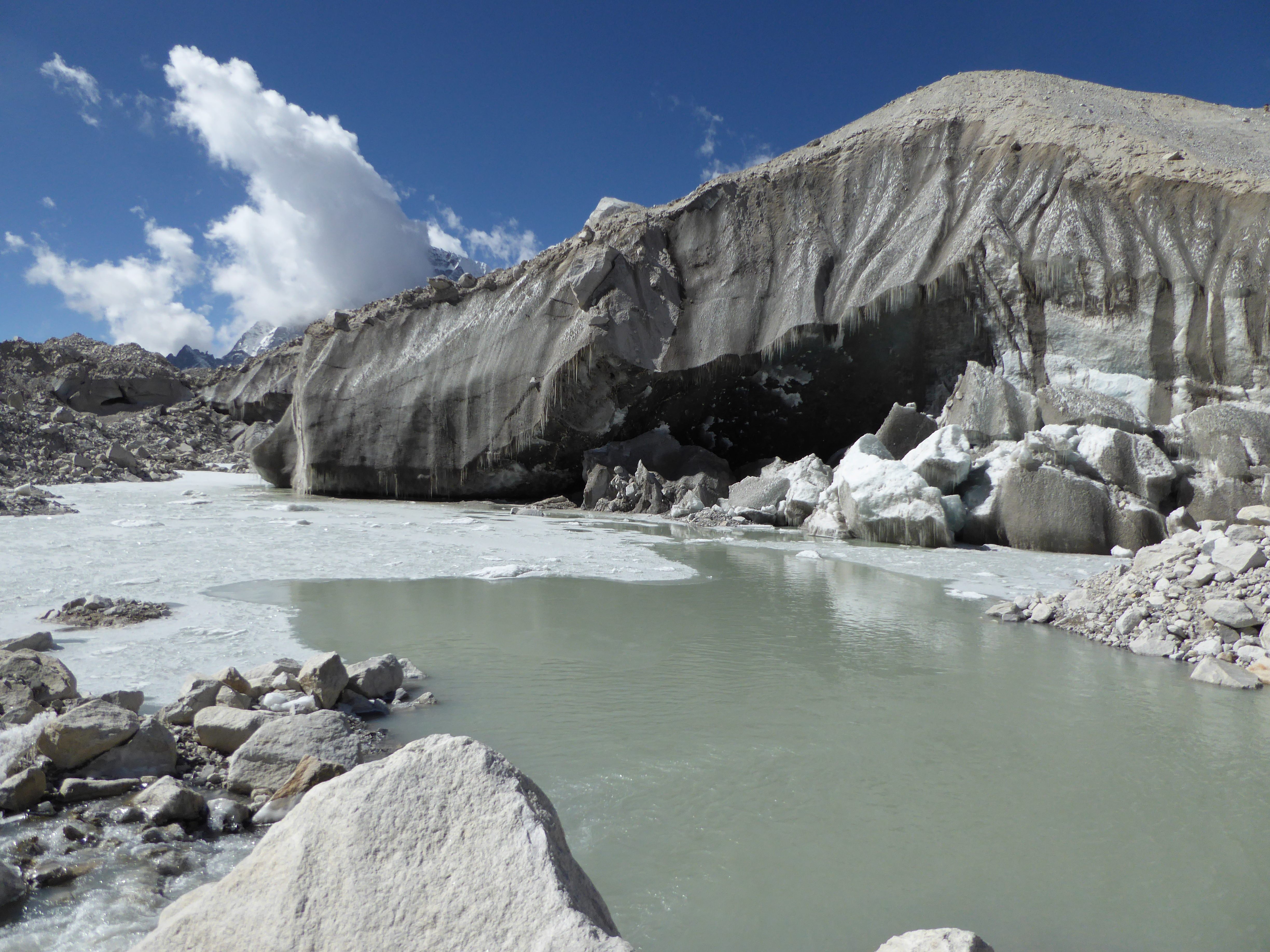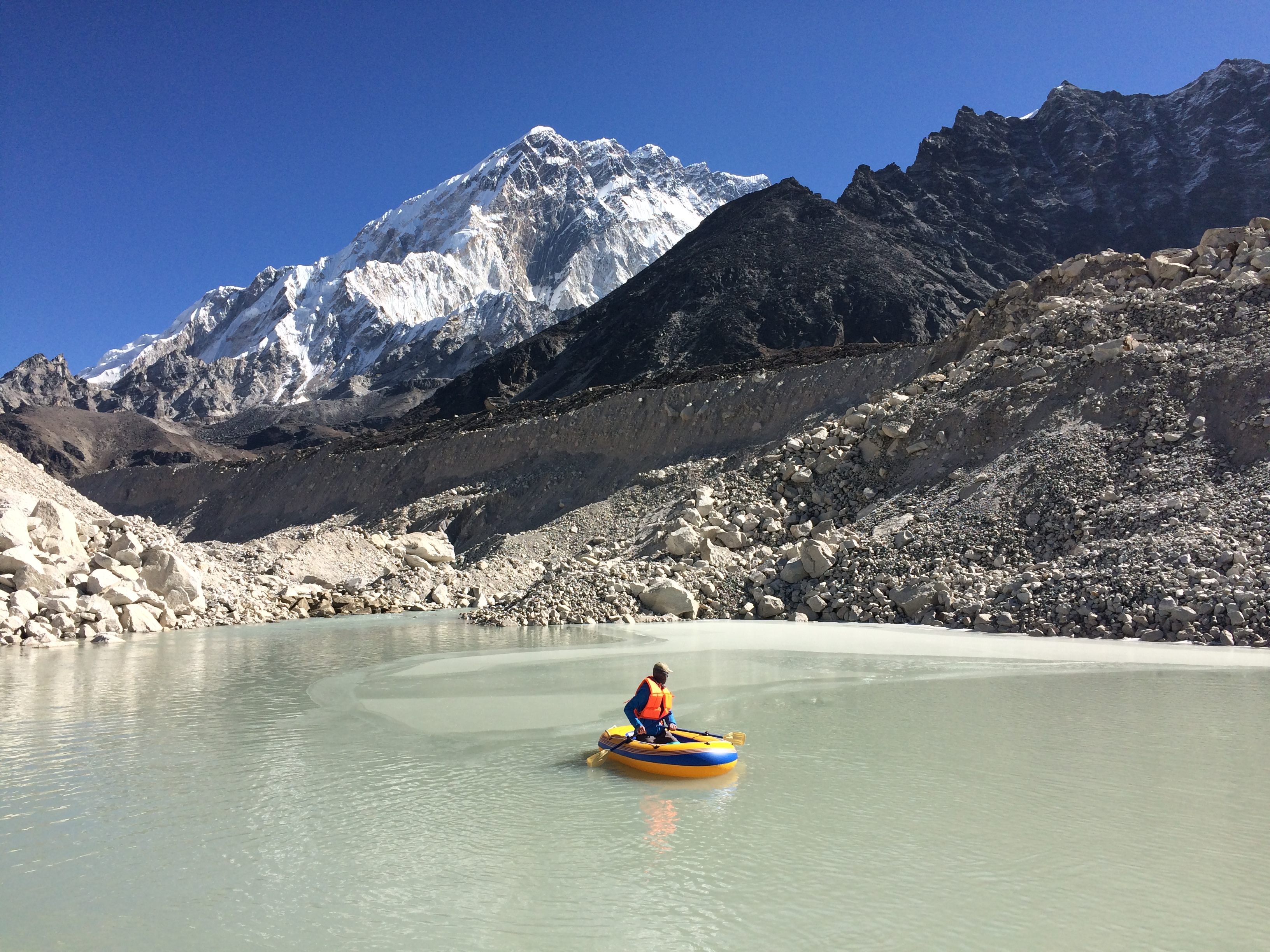FOUND: Lakes That Used to Be Mount Everest Glaciers

A supraglacial lake on Mount Everest (Photo: C. Scott Watson)
On one side of Mount Everest, the ice is melting so fast that lakes are forming on the surface of glaciers.
As the Washington Post reports, a team of British geologists recently traveled to Mount Everest’s Khumbu Glacier, the highest glacier in the world, and found that “for the first time supraglacial ponds on the ice river’s surface have coalesced into lakes the length of several football fields.”
Elsewhere in the Himalayas, other glaciers have been melting down into lakes, too; the worry is that these lakes will become so large that they will start flowing down the mountain and flood the area below. As ponds and lakes form, they may also speed up the melting of the glacier, the team explains, as they transfer thermal energy from the sun to the ice below. At the Khumbu Glacier, scientists have found ponds in the past; now, the BBC writes, those ponds are joining up to form these larger bodies of water.

Researching supraglacial lakes (Photo: Owen King)
These changes are linked to climate change. This week’s climate meeting in Paris aims to limit the increase in the world’s warming, but even if the meeting succeeds, the commitments countries make will not keep global average temperatures from rising to a level that scientists consider dangerous. Right now, the world is heading towards a future where glaciers melt into floods.
Bonus finds: Shakespeare’s kitchen, 2.5-million-year-old peach pits, 120-year-old beer
Every day, we highlight one newly lost or found object, curiosity or wonder. Discover something unusual or amazing? Tell us about it! Send your finds to sarah.laskow@atlasobscura.com.












Follow us on Twitter to get the latest on the world's hidden wonders.
Like us on Facebook to get the latest on the world's hidden wonders.
Follow us on Twitter Like us on Facebook